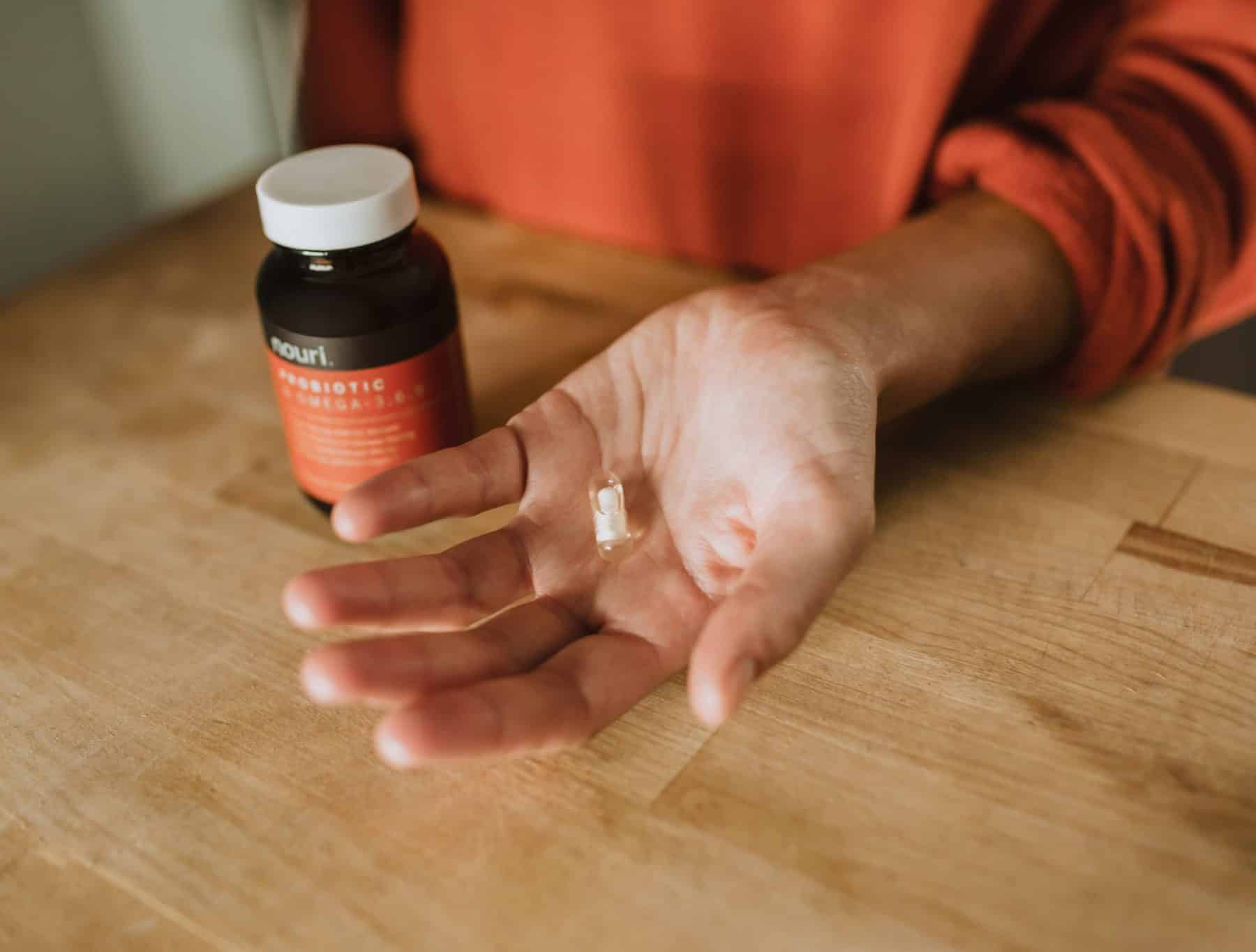The balance of bad and good bacteria in your gut can be upset by medical conditions, physical stress, emotional stress, or the use of antibiotics, which are known to destroy bacteria. Probiotics can tip the balance back to good bacteria. They can also boost your immunity, fight inflammation, and provide relief for painful digestion related to irritable bowel syndrome (IBS) or infectious diarrhea [1].
When looking at the back of a probiotic supplement nutrition label or for specific strains on the internet, there are three levels to probiotic naming that are worth knowing. The first level is the Genus, the second level is the Species, and the third level is the Strain. Probiotic names will definitely have the genus (listed first) and species (listed second) and some will also include the strain (listed third). An example of a probiotic containing all three is Lactobacillus rhamnosus DE111, but most of the time you will just see Lactobacillus rhamnosus. Many times you will just see the first letter of the genus written so Lactobacillus rhamnosus will be written as L. rhamnosus. Many probiotics are listed as strains for convenience purposes, but in reality they are species because they only contain the first 2 levels like Lactobacillus rhamnosus. Also, in some cases the species names are also the strain names. In many instances there is not enough scientific evidence to really differentiate which individual strains are most beneficial to gut health, but there is enough information to make a good case at the species level.
Specific Probiotic Species-Strains and Potential Gut Health Benefits
Lactobacillus Acidophilus
This bacterium colonizes most densely in the small intestine, where it helps maintain the integrity of the intestinal wall, ensure proper nutrient absorption, and support healthy overall digestive function. A meta-analysis from 2019, sought to determine which species/strains were best for IBS patients. While they didn’t come up with one prevailing strain, they did find that multi-strain probiotics generally worked better than single-strain probiotics, and that L. acidophilus appeared in all the successful multi-species/strain studies [2].
Lactobacillus Fermentum
This bacterium, which has been found in the probiotic containing foods sourdough and kimchi, produces powerful antioxidants that help neutralize some of the toxic products made in the gut during digestion. L. fermentum has also been isolated as exhibiting activity against foodborne pathogens.
Lactobacillus Plantarum
L. plantarum is known for its ability to produce hydrogen peroxide which the body uses as a defense against bacteria consumed in food, as well as other microorganisms.
Lactobacillus Rhamnosus
This probiotic is known for its ability to survive passage through the GI tract and is thought to be useful in preventing traveler’s diarrhea.
Lactobacillus Reuteri
This probiotic colonizes in both the intestine and oral cavity. In human trials, it has been shown to support digestive health.
Bifidobacterium Longum
This probiotic is one of the more common species/strains of Bifidobacteria found in the GI tract. Its digestive benefits are largely from its ability to break down carbohydrates and to scavenge and neutralize everyday toxins found in the gut. Preliminary research suggests that the antioxidant properties of this probiotic species/strain include the clearance of metal ions, especially copper, and the scavenging of free radicals.
Bifidobacterium Bifidum
This probiotic species/strain is among the first to colonize in the intestines of babies and continues throughout life to be one of the main groups of good flora found in the large intestine. (It can also be found in the small intestine.) In addition to helping promote bacterial balance, it prevents the growth of unwanted bacteria, molds, and yeasts by naturally adhering to the intestinal mucosa better than other bacterial species/strains. B. bifidum assists in the breakdown of complex carbohydrates, fat, and proteins during digestion. It also produces enzymes that break the larger molecules down into smaller components that the body can more efficiently use. A meta-analysis of double blind human trials found that this B. bifidum is one of the probiotic strains that can help alleviate occasional diarrhea, especially when traveling.
Bifidobacterium Infantis
This probiotic is the largest population of beneficial bacteria in babies. The amount of B. infantis in our guts decline as we age, but it remains an important part of our microflora. Supplementation with probiotic has been shown to decrease bloating and bowel movement difficulty.
Bacillus Coagulans
B. coagulans, like other lactic acid–producing bacteria, produces enzymes that assist in the digestion of lactose. It also improves the body’s ability to use calcium, phosphorus, and iron, and stimulates both gastric juices and gastric motility.
References
[1] Ciorba M. A. (2012). A gastroenterologist’s guide to probiotics. Clinical gastroenterology and hepatology : the official clinical practice journal of the American Gastroenterological Association, 10(9), 960–968. https://doi.org/10.1016/j.cgh.2012.03.024
[2] Dale, H. F., Rasmussen, S. H., Asiller, Ö. Ö., & Lied, G. A. (2019). Probiotics in Irritable Bowel Syndrome: An Up-to-Date Systematic Review. Nutrients, 11(9), 2048. https://doi.org/10.3390/nu11092048
https://swolverine.com/blogs/blog/the-5-best-probiotic-strains-for-a-healthy-gut
https://www.webmd.com/healthy-aging/best-probiotic-strains-older-adults
https://www.marksdailyapple.com/best-probiotic-strains/
https://www.healthydirections.com/articles/digestive-health/probiotic-strains








